Library
|
|
|
Bible Codex Amiatinus Codex Amiatinus ( AD 688 - 713 ) is a Bible which was produced by monks at the twin monastery of Wearmouth-Jarrow. Abbot Ceolfrith, of Wearmouth-Jarrow, set off on a journey to Rome with the Bible as a gift to Pope Gregory II.
|
|
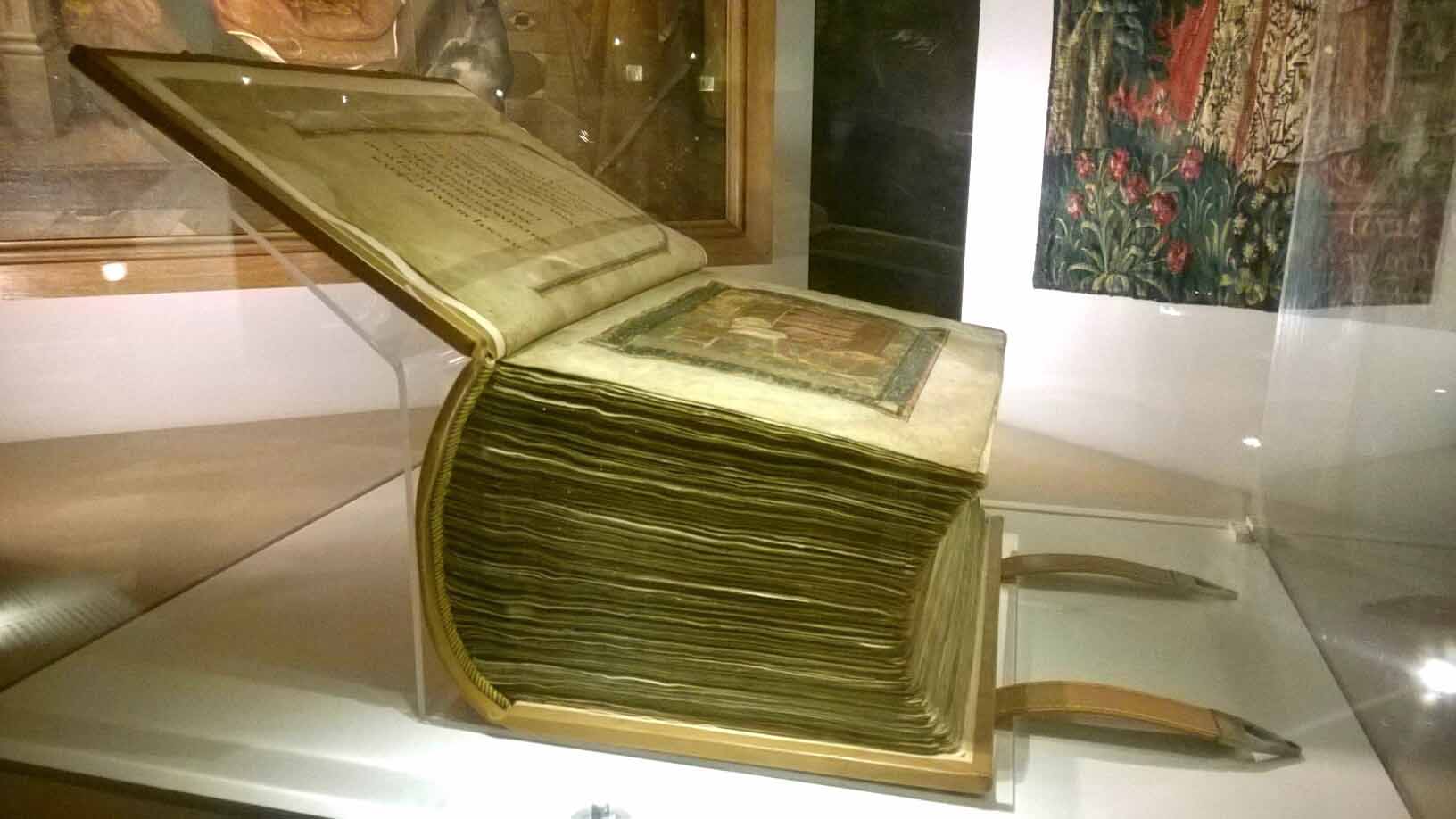 |
|
|
Click above for detail
|
|
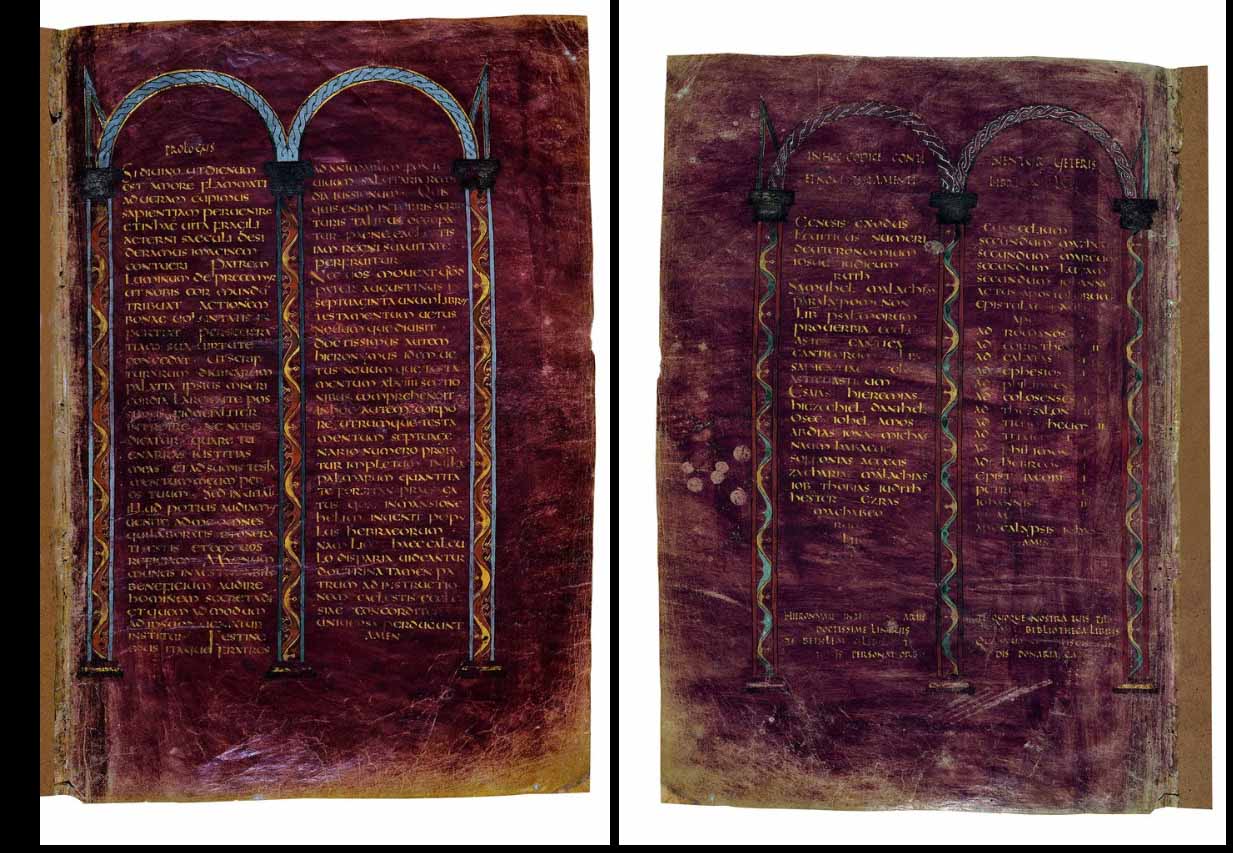 |
|
|
Click above for detail Ceolfrith’s died on the journey to Rome in 716 at Langres monastery in France and his followers took the Codex Amiatinus on to Rome and presented it to the Pope. It is the only one of the three volumes to survive, although there a few loose pages of the second copy. It is the oldest one-volume Latin Bible to survive in the world.
|
|
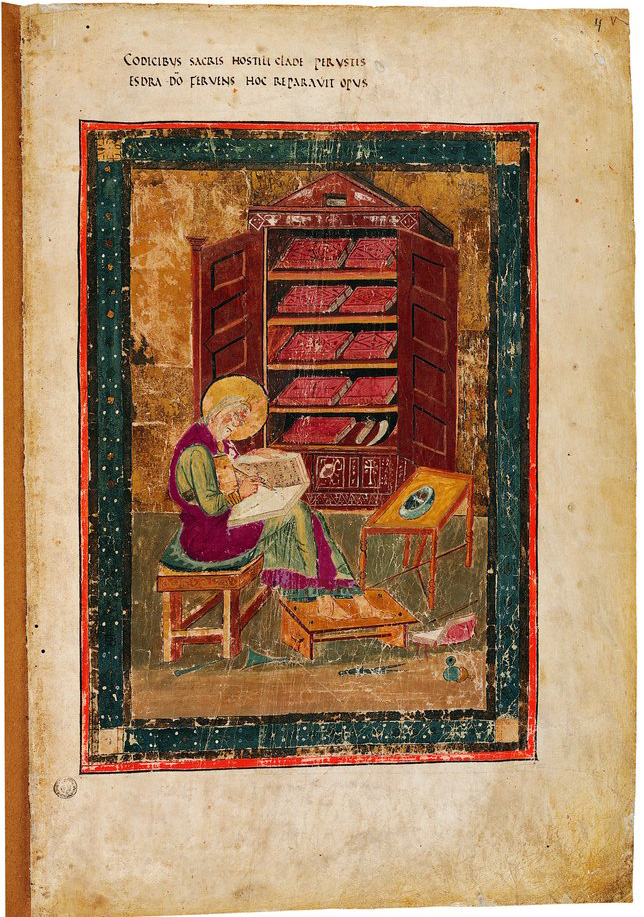 |
|
|
Click above for more
detail Ezra is shown writing a manuscript on his lap, seated before an open book cupboard containing a Bible in nine volumes. The illumination is among the oldest images in the Western world to show a bookcase and the bindings of books.
|
|
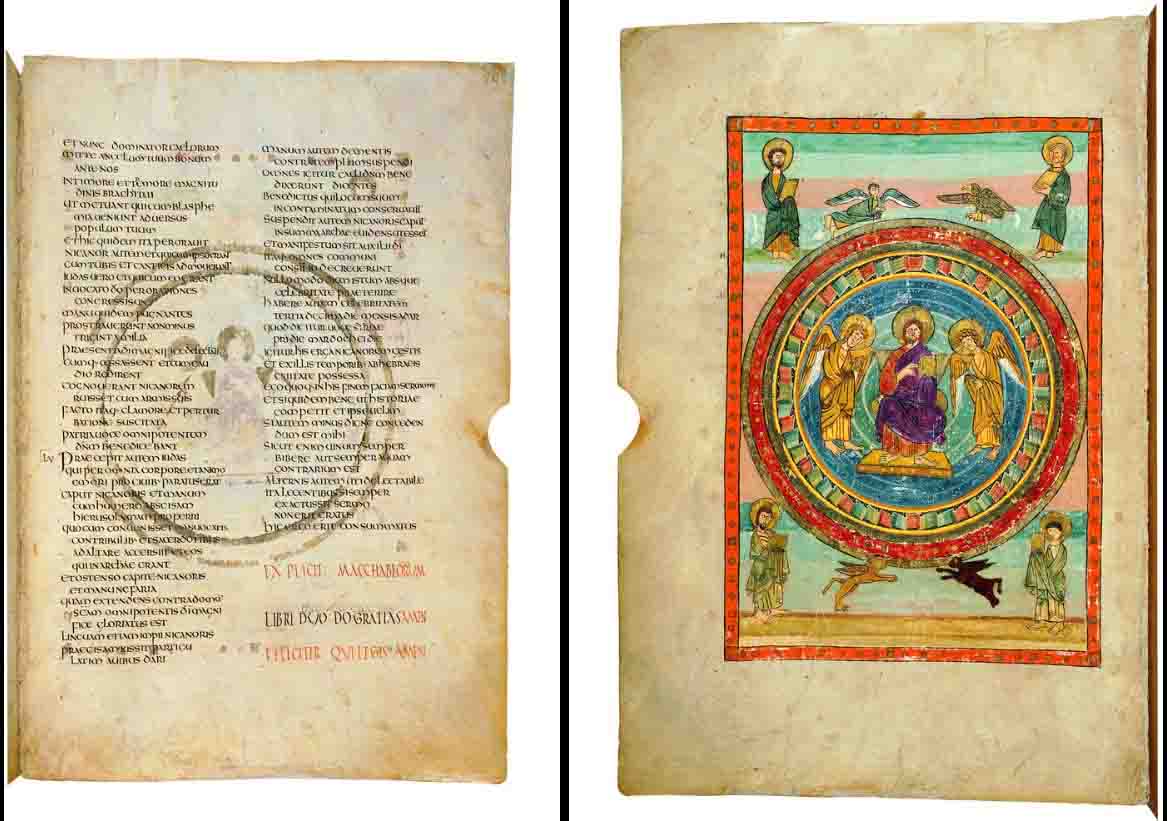 |
|
|
Click above for detail
Above you looking at two sides of the same page. Notice how the ink has bleed through. It shows the end of the Old Testament, 2 Maccabees, and the beginning of the New Testament with Jesus Christ sitting on His throne.
|
|
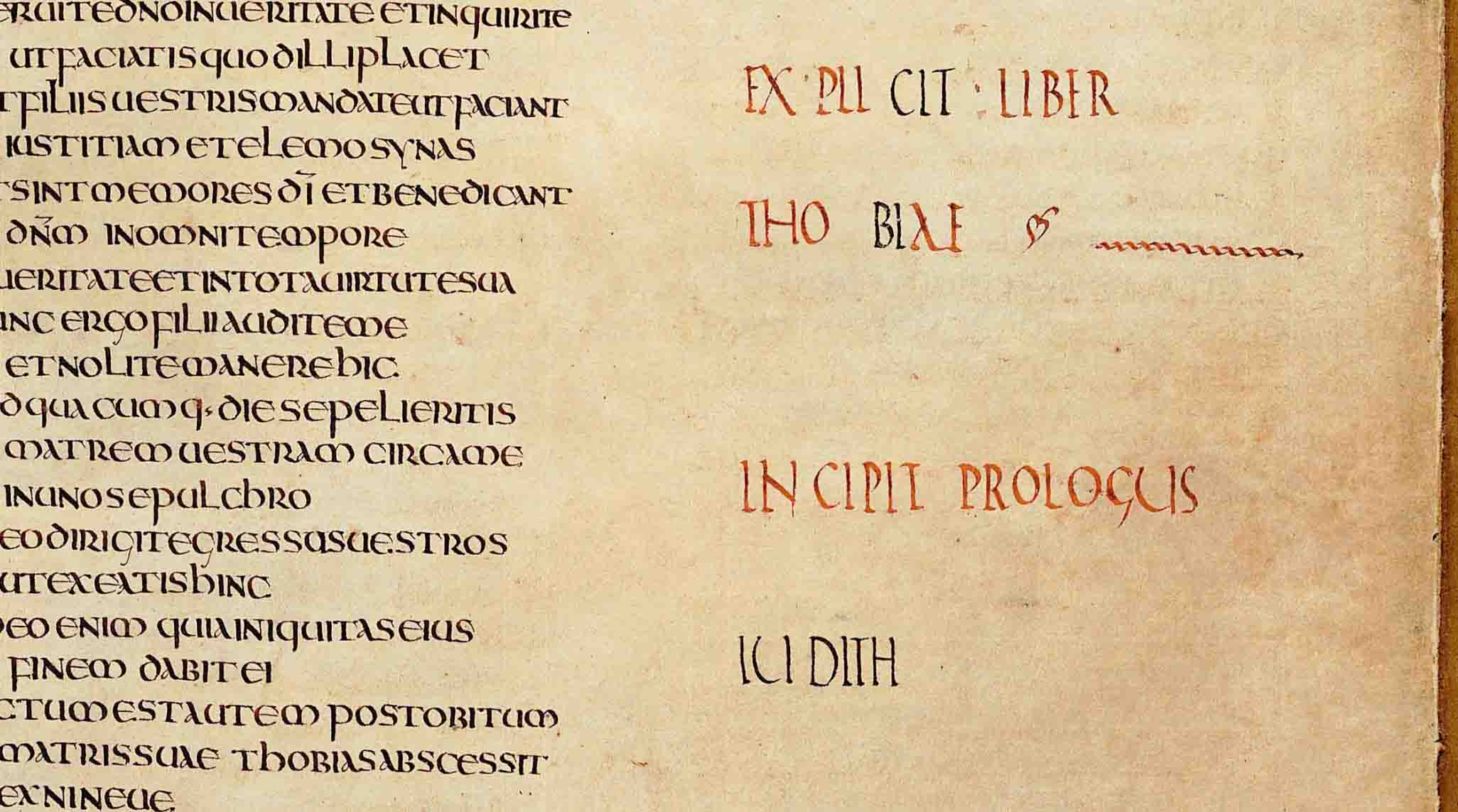 |
|
|
Click above for detail The above page shows the end of the Book of Tobit (Thobiae) and the beginning of the Book of Judith (Iudith). (There is no letter J in the Latin alphabet. Originally, I and J were different shapes for the same letter. The letter J was added much later to the Romance Languages, in AD 1524 in Italian. Notice how the I and the J are drawn similarly in small cursive. i j . Only these two letter have a dot on top.)
Patron
|
|
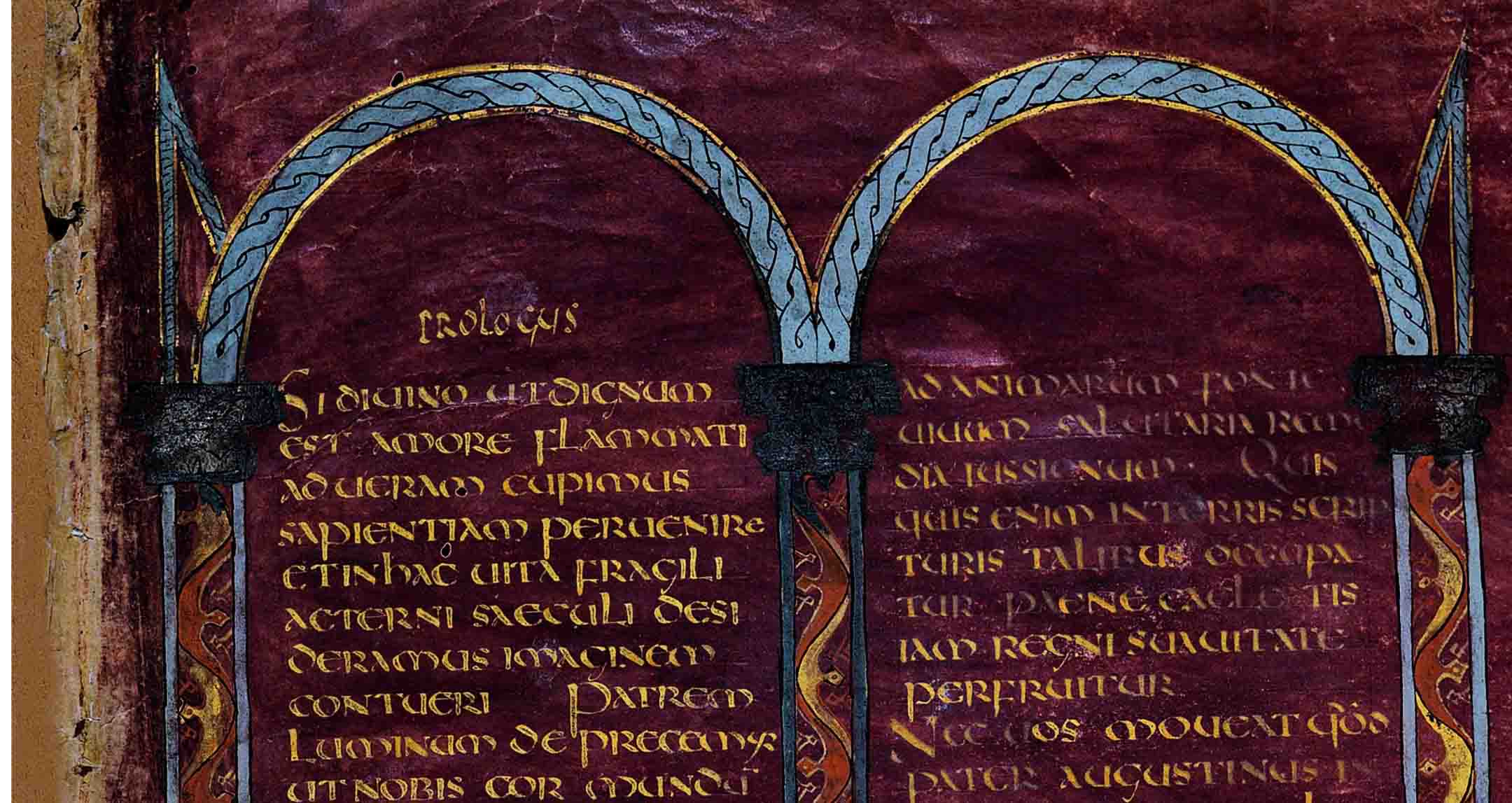 |
|
|
Click above for detail The bible is
written not on paper but on vellum, which is made from the stretched and
processed hides of cows and sheep. This is durable and hard-wearing but
also much bulkier than paper, meaning that the leather bound bible is
both
|
|
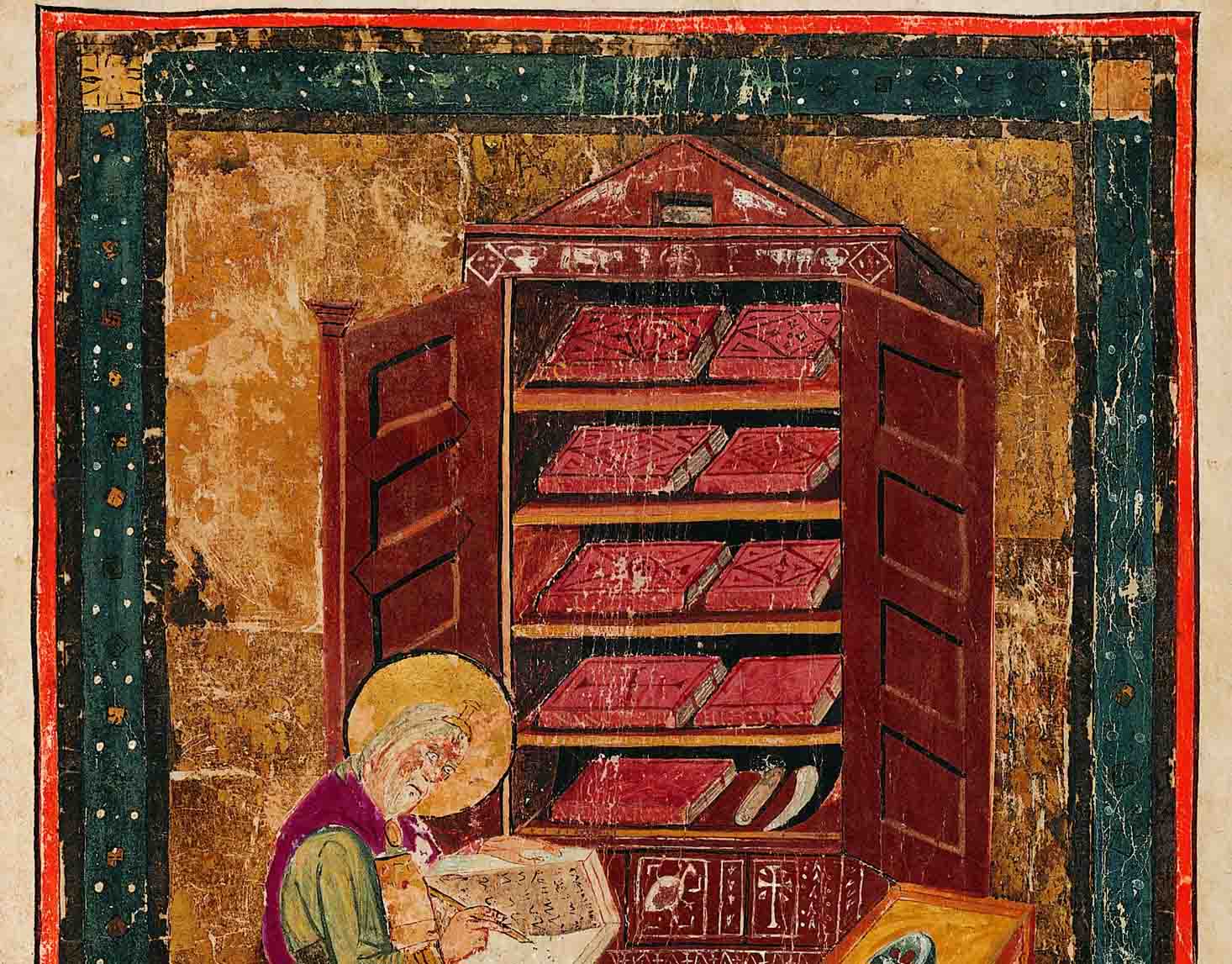 |
|
|
Click above for detail "It is an incredible thing. It has over 1000 leaves [of vellum], requiring the skins of more than 1000 animals in it. The spine of the book is almost 15 centimeters thick," Breay said. "It is one of the greatest treasures to survive from Anglo-Saxon times but probably one of the least known." |
|
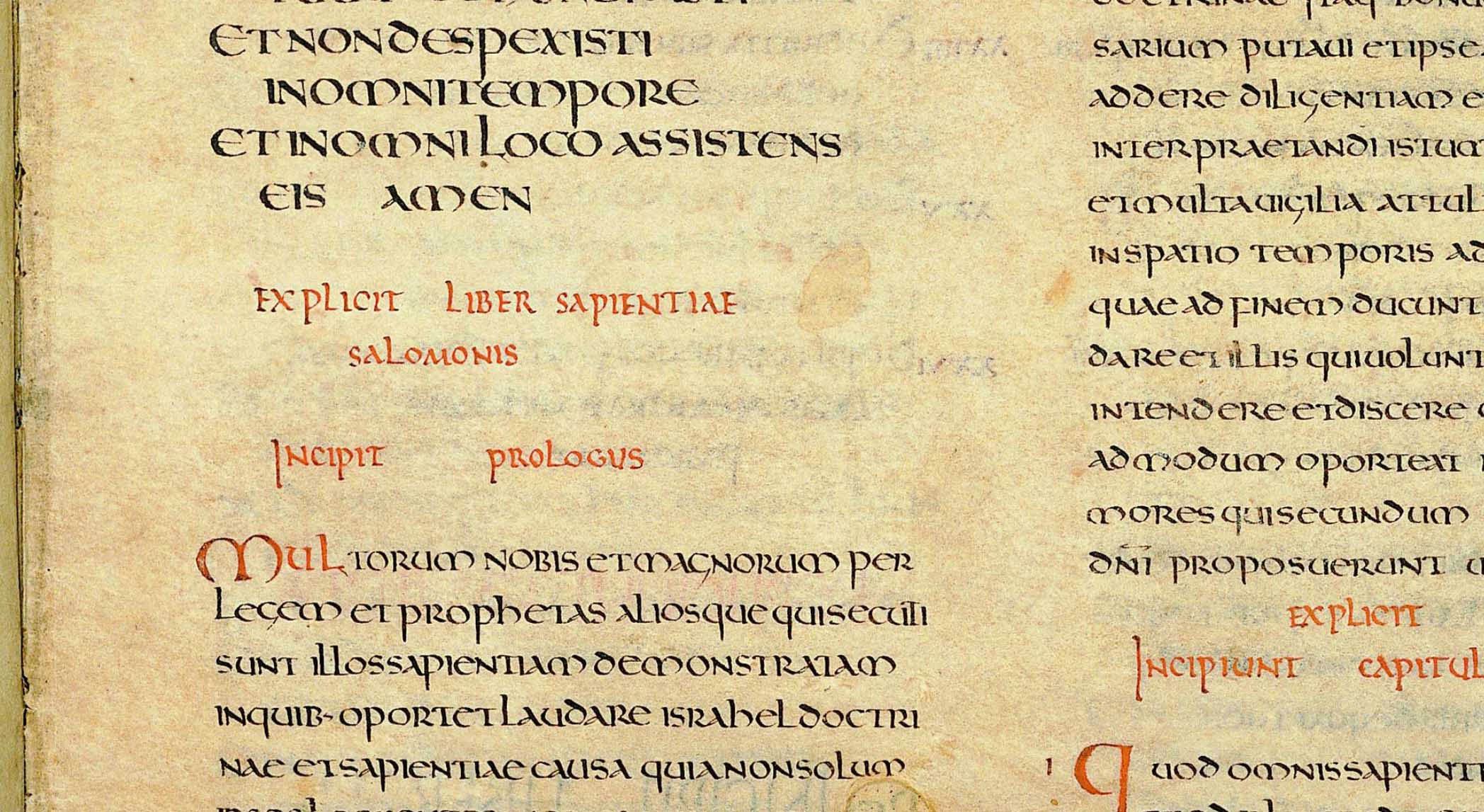 The end of the Book of Wisdom of Solomon is pictured above. |
|
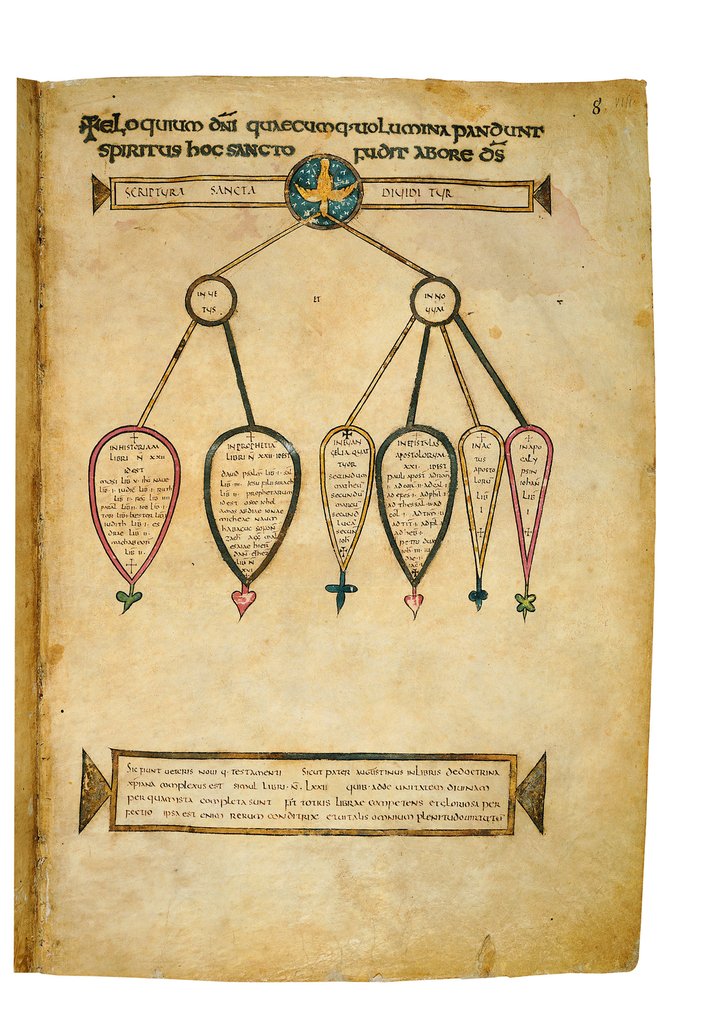 |
|
|
See below for detail
|
|
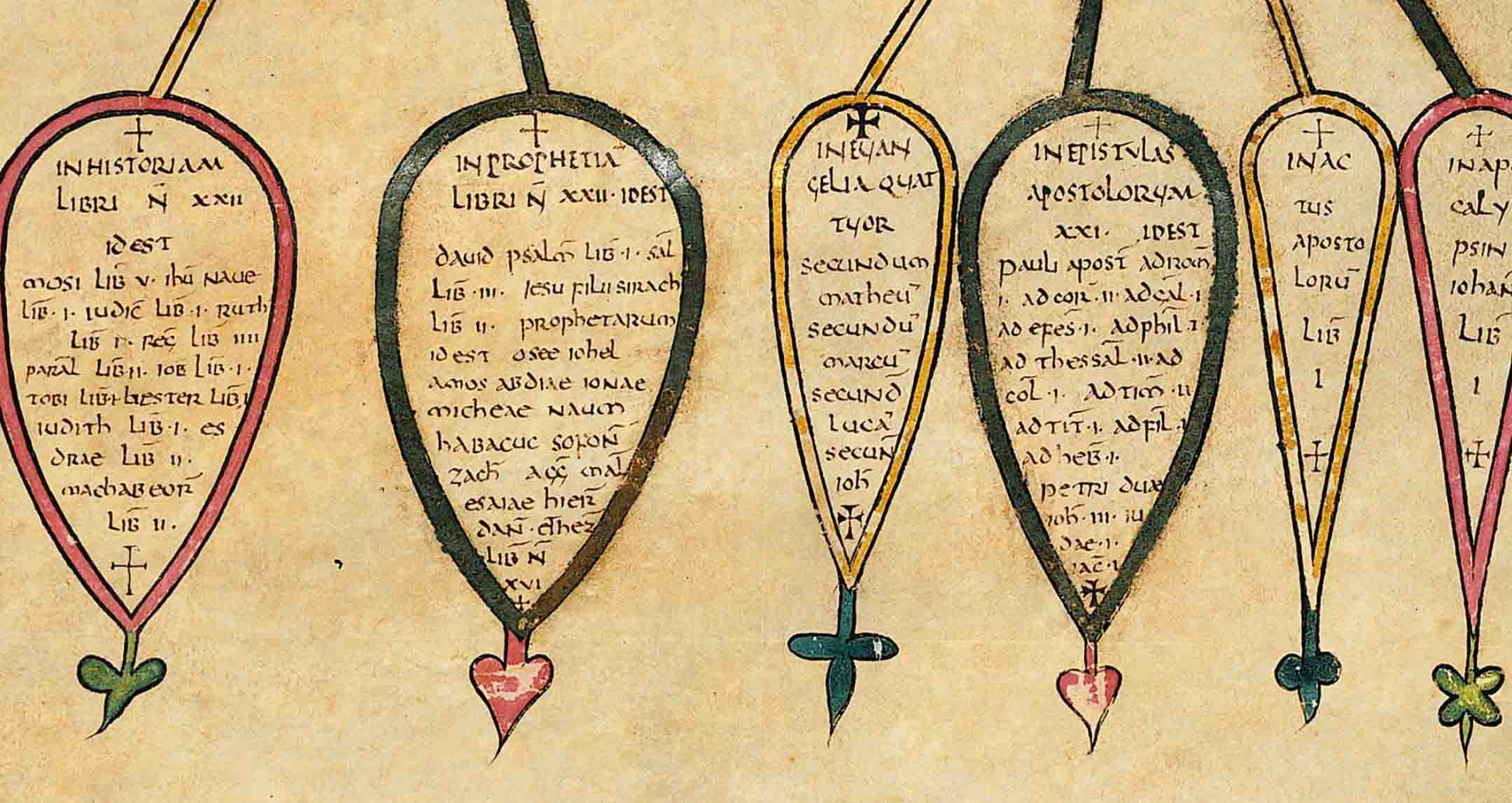 |
|
|
Click above for more detail A list of the Books in the Bible. Notice the four Gospels listed in the third column. Matthew (Matheu), Mark (Marcu), Luke (Luca), and John (Joh.) Secundum is Latin and is defined as “according to.” See Bible Codex Amiatinus Page 2
|
|
| Notice above how the Book Ecclesiasticus or called Sirach
above is grouped in the middle of wisdom or
Prophets section of the Bible. See second column above. The
Deuterocanonical (or so called Apocryphal) Books are not grouped into a
separate section by themselves as was done in the King James Bible. See King James Bible. See
Catholic German language Bible before Luther |
|
|
|
|
|
|
|
||||
|
||||
|
||||
|
||||
|
||||